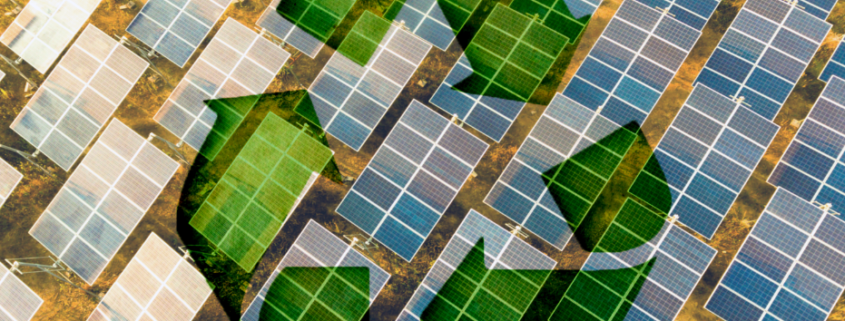Recycling of solar panels and wind turbines
Image: greenbiz
Written by Christos Kougevetopoulos, head of opperations at Wattcrop.
What happens to solar panels and wind turbines when they reach the end of their useful life?
As the world transitions towards renewable energy sources, the demand for solar panels and wind turbines has significantly increased. However, as with any technology, these devices have a limited lifespan and eventually need to be replaced. This raises an important question – what happens to solar panels and wind turbines when they reach the end of their useful life? The answer lies in the concept of recycling.
Solar panels and wind turbines are made up of a variety of materials, including metals, glass, and plastics. While these materials can be recycled, the process is not always straightforward. For example, solar panels contain toxic materials such as lead and cadmium, which require specialized recycling facilities to safely extract and dispose of. Similarly, wind turbines are composed of large quantities of fiberglass and other composite materials that can be difficult to recycle.
In response to these challenges, European countries have implemented a variety of policies and initiatives aimed at promoting the recycling and reuse of decommissioned renewable energy systems. For example, the European Union’s Waste Electrical and Electronic Equipment (WEEE) Directive requires member states to establish collection and recycling systems for solar panels and other electronic waste. Additionally, several European countries have established specialized recycling facilities for solar panels and wind turbines.
Solar Panel Recycling:
Solar panels are made up of various materials, including glass, aluminum, copper, and plastic. These materials can be recycled, and the process typically involves separating the different components of the panel and melting them down to be reused in new products.
The first step in recycling a solar panel is to remove the aluminum frame and the glass cover. The cells inside the panel are then separated and treated with chemicals to remove the silicon. The silicon can then be recycled to make new solar cells or used in other applications.
Another important material in solar panels is the thin film coating, which is often made of cadmium telluride or copper indium gallium selenide. These materials are toxic and require special handling during the recycling process. However, they can still be reused in other applications.
In some cases, solar panels that are still functional but are no longer needed may be resold or donated to organizations that can use them. This can help extend the lifespan of the panels and reduce waste.
Wind Turbine Recycling:
Wind turbines are made up of a variety of materials, including steel, aluminum, copper, and plastic. Like solar panels, these materials can be recycled, and the process typically involves separating the different components of the turbine and melting them down to be reused in new products.
The first step in recycling a wind turbine is to remove the blades, which are often made of composite materials such as fiberglass or carbon fiber. These materials can be difficult to recycle, but there are several methods currently being developed to make the process more efficient.
The tower and other components of the wind turbine can then be dismantled and separated into their different materials. These materials can then be melted down and reused in new products.
Recycling solar panels and wind turbines has several benefits, including:
- Reduced waste: Recycling these devices helps to reduce the amount of waste that ends up in landfills.
- Conservation of resources: Recycling the materials in these devices helps to conserve natural resources and reduce the need for new materials.
- Energy savings: Recycling uses less energy than producing new materials, which helps to reduce carbon emissions and conserve energy.
- Job creation: Recycling these devices creates jobs in the recycling industry and helps to support a more sustainable economy.
In conclusion, as renewable energy becomes increasingly important in the fight against climate change, the recycling and disposal of decommissioned renewable energy systems, which is a complex and ongoing challenge, also becomes increasingly important. To overcome that challenge cooperation between industry, government, and research institutions is required. While Europe has made significant progress in promoting the recycling and reuse of solar panels and wind turbines, there is still work to be done to reduce the environmental impact of renewable energy systems. By continuing to develop new materials and manufacturing processes, and by investing in specialized recycling facilities, Europe can ensure that renewable energy remains a sustainable and effective tool for combating climate change.


